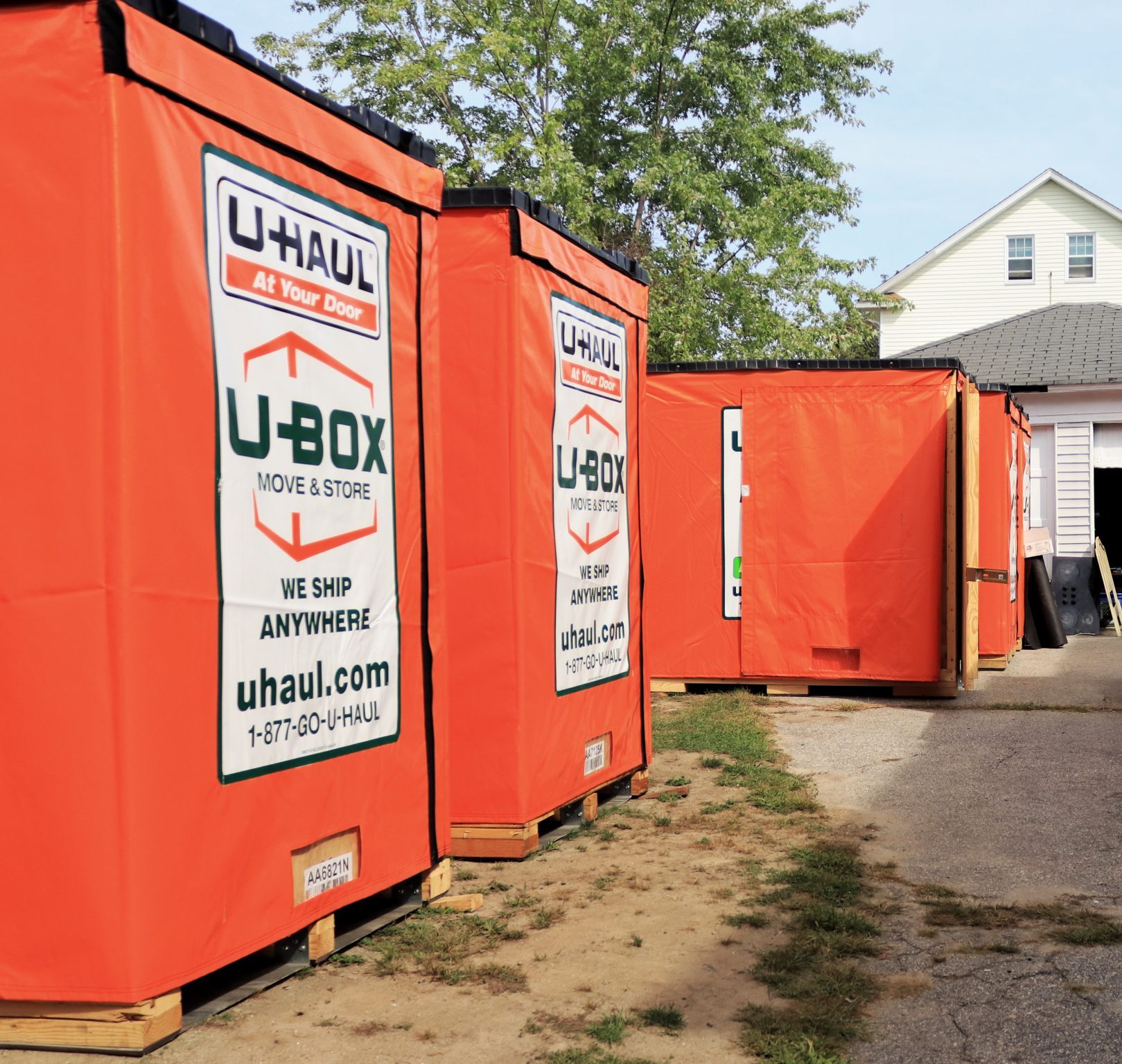U-Haul Car Trailer: Your Comprehensive Guide to DIY Vehicle Transport cars.truckstrend.com
Moving across states, transporting a non-running classic, or simply needing to relocate a vehicle without adding mileage? The U-Haul car trailer stands as a ubiquitous and often indispensable solution for countless individuals. Far more than just a piece of equipment, it represents freedom, flexibility, and cost-effectiveness for do-it-yourself vehicle transportation. This comprehensive guide will delve into every aspect of U-Haul car trailers, from understanding their types and benefits to mastering the art of safe towing, empowering you to confidently tackle your next vehicle transport challenge.
Understanding U-Haul Car Trailers: The Two Key Options
U-Haul Car Trailer: Your Comprehensive Guide to DIY Vehicle Transport
U-Haul offers two primary types of trailers designed for vehicle transport, each suited to different needs and vehicle types: the Auto Transport (also known as a car carrier) and the Tow Dolly. Understanding their distinctions is crucial for selecting the right equipment for your specific situation.
1. U-Haul Auto Transport (Car Carrier)
The U-Haul Auto Transport is a four-wheel trailer designed to lift the entire vehicle off the ground. This means all four wheels of your towed vehicle are resting on the trailer platform, ensuring no mileage is accumulated during transit.
- Description: A sturdy, heavy-duty trailer with ramps for loading, tire straps for securing, and often equipped with surge brakes.
- Benefits:
- Maximum Protection: Your vehicle is completely off the ground, protecting its tires, suspension, and drivetrain from wear and tear.
- Versatility: Suitable for front-wheel drive (FWD), rear-wheel drive (RWD), and all-wheel drive (AWD) vehicles without modification. Ideal for classic cars, luxury vehicles, or those with specific drivetrain requirements.
- Non-Running Vehicles: Can easily transport vehicles that are not operational.
- Long Distances: Preferred for cross-country moves due to reduced wear and tear on the towed vehicle.

- When to Use: Long-distance moves, transporting valuable or non-running vehicles, or when you have an AWD/4WD vehicle.
2. U-Haul Tow Dolly
The U-Haul Tow Dolly is a two-wheel trailer that lifts only the front wheels of the towed vehicle off the ground, leaving the rear wheels to roll on the pavement.
- Description: Lighter and more compact than the Auto Transport, featuring a small platform for the front wheels and integrated ramps.
- Benefits:
- Cost-Effective: Generally more affordable to rent than the Auto Transport.
- Lighter Weight: Easier to maneuver and requires a less robust towing vehicle compared to the Auto Transport.
- Simpler Operation: Can be quicker to load for compatible vehicles.
- When to Use: Shorter distances, transporting FWD vehicles, or when budget and towing vehicle capacity are primary concerns.
- Important Considerations:
- Mileage Accumulation: The rear wheels of the towed vehicle will accrue mileage during transit.
- Steering Wheel Lock: For FWD vehicles, the steering wheel must be unlocked to allow the front wheels to pivot with the dolly’s turns.
- RWD/AWD: Requires specific modifications like driveshaft removal for RWD/AWD vehicles to prevent transmission damage, making the Auto Transport a far simpler and safer option for these drivetrains.
Key Benefits of Choosing U-Haul for Vehicle Transport
Opting for a U-Haul car trailer offers a compelling array of advantages for individuals needing to move a vehicle:
- Cost-Effectiveness: Often significantly cheaper than hiring a professional auto transport service, especially for local or regional moves.
- Flexibility and Control: You dictate the schedule, pick-up, and drop-off times, offering unparalleled control over your moving timeline.
- Nationwide Availability: U-Haul’s extensive network of locations across North America makes it easy to find a trailer wherever you are and drop it off at your destination.
- DIY Empowerment: For those who prefer a hands-on approach, U-Haul provides the tools and resources to manage their own transport.
- Variety of Options: The choice between an Auto Transport and a Tow Dolly ensures there’s a solution for most vehicle types and towing needs.
Is Your Vehicle Compatible? Important Considerations
Before renting, meticulous planning is paramount. Not all vehicles can tow, and not all vehicles can be towed by U-Haul equipment.
Towed Vehicle Compatibility
- Weight Limits: Each trailer has a maximum weight capacity. You must know the curb weight of the vehicle you intend to tow.
- Width and Length: Ensure your vehicle fits within the trailer’s dimensions. U-Haul’s website has specific measurements for each trailer type.
- Ground Clearance: Low-profile vehicles might struggle with loading ramps on either trailer.
- Drivetrain (FWD, RWD, AWD): As mentioned, this is critical for Tow Dollies. Always check U-Haul’s guidelines for your specific vehicle.
Towing Vehicle Requirements
This is arguably the most critical aspect for safety. Your towing vehicle must be capable of safely handling the combined weight of the trailer and the towed vehicle.
- Towing Capacity: Consult your vehicle’s owner’s manual for its maximum towing capacity (Gross Combined Weight Rating – GCWR, and Gross Trailer Weight – GTW).
- Hitch Class:
- Tow Dolly: Typically requires a Class I or II hitch (1.25" or 2" receiver) with a 2" hitch ball.
- Auto Transport: Requires a Class III or IV hitch (2" or 2 5/16" receiver) with a 2" hitch ball.
- Trailer Wiring: Both trailers require a functioning 4-flat or 7-pin wiring harness for lights and turn signals. The Auto Transport typically requires a 7-pin connector for its surge brakes.
- Brake Controller: While Auto Transports have surge brakes (actuated by the trailer pushing on the hitch), some heavy loads or specific towing vehicles might benefit from an aftermarket brake controller for enhanced stopping power and control.
- U-Haul’s Compatibility Tool: U-Haul provides an excellent online tool where you can input your towing vehicle and the vehicle you intend to tow, and it will tell you if they are compatible with their trailers. Always use this tool!
Step-by-Step Guide: Renting, Attaching, and Loading Your U-Haul Car Trailer
Proper execution is key to a safe and successful towing experience.
1. Renting the Trailer
- Online Reservation: The easiest way to secure your trailer. Input your pick-up/drop-off locations, dates, and vehicle information.
- Required Documents: Have your valid driver’s license and a major credit card ready for pick-up.
- Pre-Inspection: Before leaving the U-Haul lot, do a walk-around inspection of the trailer with the U-Haul representative. Check tires, lights, chains, and overall condition.
2. Attaching the Trailer
- Safety First: Park your towing vehicle on a level surface, engage the parking brake, and put it in park (or neutral with brake for manual).
- Hitch Ball Connection: Carefully back your towing vehicle until the hitch ball is directly under the trailer’s coupler. Lower the coupler onto the ball until it’s fully seated. Secure the latch mechanism.
- Safety Chains: Cross the safety chains under the trailer tongue and attach them to the designated points on your towing vehicle’s hitch receiver.
- Electrical Connection: Plug the trailer’s wiring harness into your towing vehicle’s receptacle.
- Breakaway Cable (Auto Transport): Attach the breakaway cable (which activates the trailer brakes if it detaches from the towing vehicle) to a separate, sturdy part of your towing vehicle’s frame, not the hitch itself.
- Test Lights: Have a helper confirm all lights (running lights, brake lights, turn signals) are working correctly.
3. Loading the Towed Vehicle
This is a critical step requiring patience and precision. Always follow U-Haul’s specific instructions provided with the trailer and watch their instructional videos.
- Positioning: Place the trailer on level ground. For Auto Transports, deploy the ramps. For Tow Dollies, ensure the wheel cradles are ready.
- Centering: Slowly drive the towed vehicle onto the trailer, ensuring it’s centered. This is crucial for proper weight distribution.
- Securing (Auto Transport):
- Drive the vehicle fully onto the trailer, ensuring its front tires are against the stops.
- Engage the towed vehicle’s parking brake (for loading).
- Use the provided heavy-duty ratchet straps to securely fasten the tires to the trailer’s wheel wells. Ensure they are extremely tight.
- Release the towed vehicle’s parking brake before driving.
- Securing (Tow Dolly):
- Drive the front wheels of the towed vehicle into the dolly’s cradles.
- Engage the towed vehicle’s parking brake.
- Secure the tires with the provided straps.
- Unlock the towed vehicle’s steering wheel (for FWD).
- Release the towed vehicle’s parking brake before driving.
- Final Check: Double-check all straps, chains, and connections before driving off. There should be no slack.
On the Road: Safe Driving Practices with a U-Haul Car Trailer
Towing significantly changes your vehicle’s dynamics. Adapt your driving style for safety.
- Reduced Speed: Drive slower than usual, especially on highways, curves, and inclines/declines. Adhere to posted towing speed limits.
- Increased Braking Distance: Your stopping distance will be significantly longer. Maintain extra following distance.
- Wider Turns: Account for the trailer’s length. Make wider turns to avoid hitting curbs or other obstacles.
- Lane Changes: Plan lane changes well in advance. Check mirrors frequently and be aware of your blind spots.
- Regular Checks: During breaks, pull over and visually inspect the trailer connection, tire pressure (on both towing vehicle and trailer), and all securing straps.
- Weight Distribution: Proper loading is key to preventing sway. Avoid putting too much weight on the rear of the trailer or too little on the tongue.
- Hills and Mountains: Downshift on inclines to maintain power and on declines to use engine braking, reducing reliance on your vehicle’s brakes.
Tips for a Smooth U-Haul Car Trailer Experience
- Plan Ahead: Reserve your trailer in advance, especially during peak moving seasons.
- Know Your Specs: Understand your towing vehicle’s capabilities and the towed vehicle’s dimensions and weight. Don’t guess.
- Watch U-Haul’s Videos: U-Haul provides excellent, detailed instructional videos on their website for attaching and loading each type of trailer. Watch them repeatedly until you feel confident.
- Pack Light: Do not load personal belongings into the vehicle being towed on the trailer. This can shift weight, impact stability, and violate U-Haul’s terms.
- Check Tire Pressure: Ensure tires on both your towing vehicle and the U-Haul trailer are inflated to the recommended pressure.
- Practice Backing Up: If possible, practice backing up the trailer in an empty parking lot before your journey. It’s counter-intuitive!
- Map Your Route: Identify potential challenges like steep grades, low clearances, or tight turns that might be difficult with a trailer.
Challenges and Solutions
- Challenge: Vehicle Doesn’t Fit or is Too Heavy.
- Solution: Re-evaluate U-Haul’s compatibility tool. If still incompatible, consider professional auto transport services. Never exceed weight limits.
- Challenge: Trailer Sway.
- Solution: This is dangerous. First, slow down. Check your loading – too little tongue weight (trailer front light) or too much weight at the very rear can cause sway. Adjust loading if possible. Ensure proper tire pressure.
- Challenge: Difficulty Loading/Unloading.
- Solution: Take your time. Ensure the ground is level. If needed, ask a friend for assistance. Use wheel chocks behind the trailer wheels for extra stability during loading.
- Challenge: Electrical Issues (Lights Not Working).
- Solution: Check the connection plug for corrosion or looseness. Inspect fuses in your towing vehicle. If issues persist, contact U-Haul for assistance.
U-Haul Car Trailer Price Table (Estimated)
It’s important to note that U-Haul prices are highly dynamic, varying based on location, availability, duration of rental, and whether it’s a local or one-way rental. The prices below are estimates and should be verified directly with U-Haul for your specific needs.
| Trailer Type | Rental Type | Estimated Daily Rate (Local) | Estimated One-Way Rate (Variable) | Key Factors Affecting Price |
|---|---|---|---|---|
| U-Haul Auto Transport | Local | $50 – $80 | N/A | Availability, demand, specific location. |
| (Car Carrier) | One-Way | N/A | $600 – $1200+ | Distance, pick-up/drop-off locations, time of year, demand. |
| U-Haul Tow Dolly | Local | $35 – $50 | N/A | Availability, demand, specific location. |
| One-Way | N/A | $300 – $800+ | Distance, pick-up/drop-off locations, time of year, demand. | |
| Additional Potential Costs | ||||
| SafeTow Coverage | Optional | $8 – $15 / day | Varies by total rental cost | Recommended for peace of mind, covers trailer damage. |
| Hitch Installation | If Needed | $150 – $400+ | N/A | Cost of parts & labor if your vehicle lacks a proper hitch. |
| Wiring Harness | If Needed | $50 – $150+ | N/A | Cost of parts & labor if your vehicle lacks proper wiring. |
| Hitch Ball & Mount | If Needed | $20 – $60 | N/A | Required if you don’t own the correct size/type. |
Always get a direct quote from U-Haul’s website or a local dealer for accurate pricing.
Frequently Asked Questions (FAQ)
Q1: Can I tow any car with a U-Haul trailer?
A1: No. Both the towed vehicle and your towing vehicle must meet specific weight, size, and compatibility requirements. Always use U-Haul’s online compatibility tool.
Q2: Do I need a special driver’s license to tow a U-Haul car trailer?
A2: In most U.S. states, a standard driver’s license is sufficient for towing U-Haul trailers, as their combined weight (towing vehicle + trailer + towed vehicle) typically falls below the commercial driver’s license (CDL) threshold. However, always verify local regulations for your specific state or province.
Q3: Is insurance required for a U-Haul car trailer?
A3: U-Haul offers optional "SafeTow" coverage which is highly recommended. It covers damage to the U-Haul trailer. Your personal auto insurance might cover liability for damage to other property, but it’s best to check with your provider regarding coverage for rented trailers.
Q4: Can I put belongings in the car being towed on the trailer?
A4: U-Haul strongly advises against this. Adding weight to the towed vehicle can alter the trailer’s weight distribution, potentially leading to instability, sway, and unsafe towing conditions.
Q5: How do I know if my towing vehicle is strong enough?
A5: Check your towing vehicle’s owner’s manual for its Gross Combined Weight Rating (GCWR) and maximum tongue weight. Then, use U-Haul’s online compatibility tool, which factors in your specific vehicle models.
Q6: What’s the difference between an Auto Transport and a Tow Dolly for AWD/4WD vehicles?
A6: For AWD/4WD vehicles, an Auto Transport (car carrier) is the only truly safe and recommended option, as it lifts all four wheels off the ground, preventing transmission damage. A Tow Dolly should generally not be used for AWD/4WD vehicles unless the driveshaft(s) can be disconnected, which is often complex and costly.
Q7: Can I back up with a U-Haul car trailer attached?
A7: Yes, but it requires practice. The trailer will turn in the opposite direction of your steering wheel. Make small, slow adjustments and use your mirrors constantly. It’s often easier to unhitch and manually maneuver the trailer for short distances if possible.
Conclusion
The U-Haul car trailer, whether an Auto Transport or a Tow Dolly, offers a practical and economical solution for vehicle transportation. While the prospect of towing might seem daunting, with proper planning, adherence to U-Haul’s guidelines, and a commitment to safe driving practices, you can confidently and successfully transport your vehicle. By understanding the equipment, preparing your vehicles, and prioritizing safety at every step, you empower yourself with the flexibility and control that DIY vehicle transport provides, turning a potential challenge into a straightforward journey.



